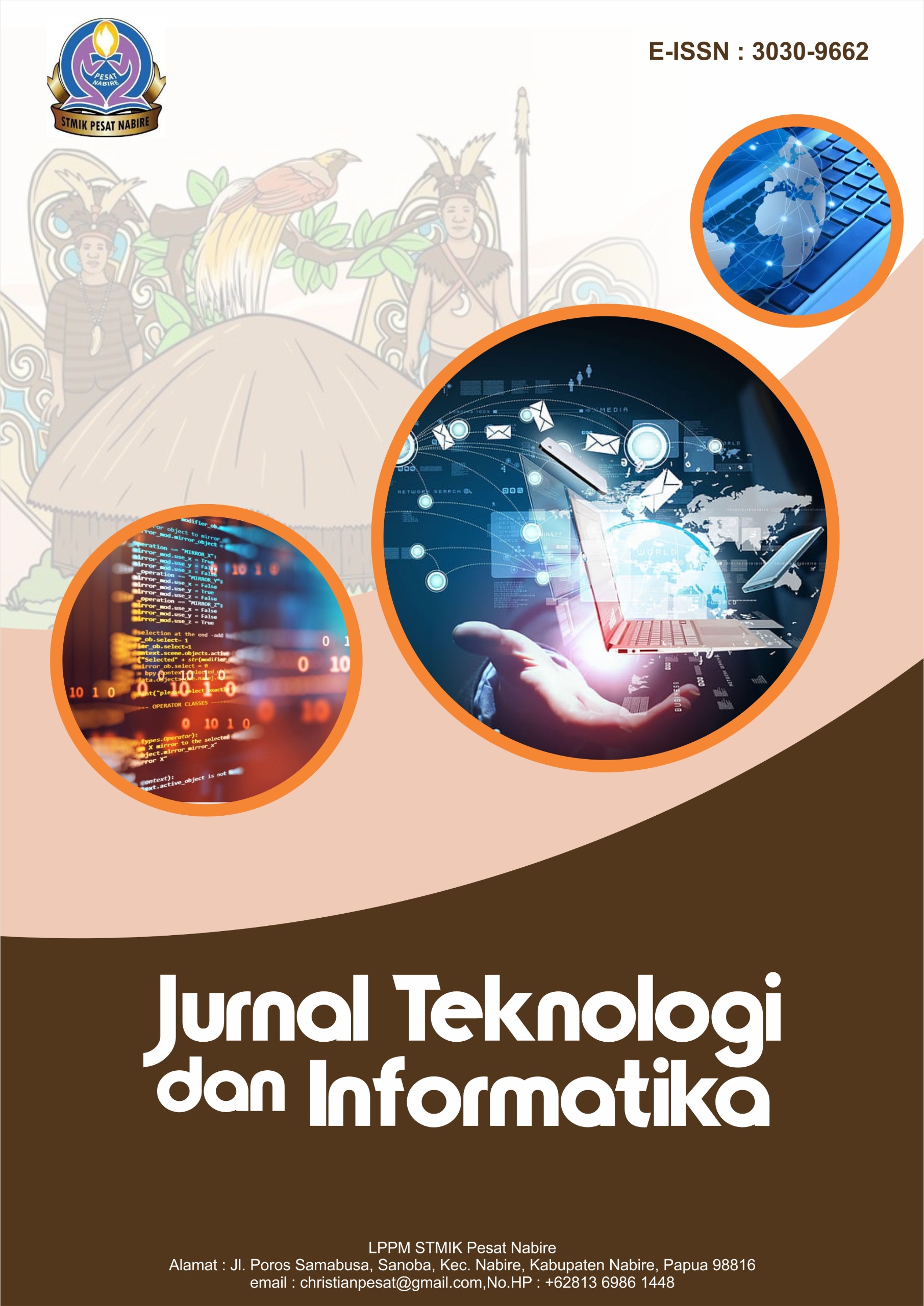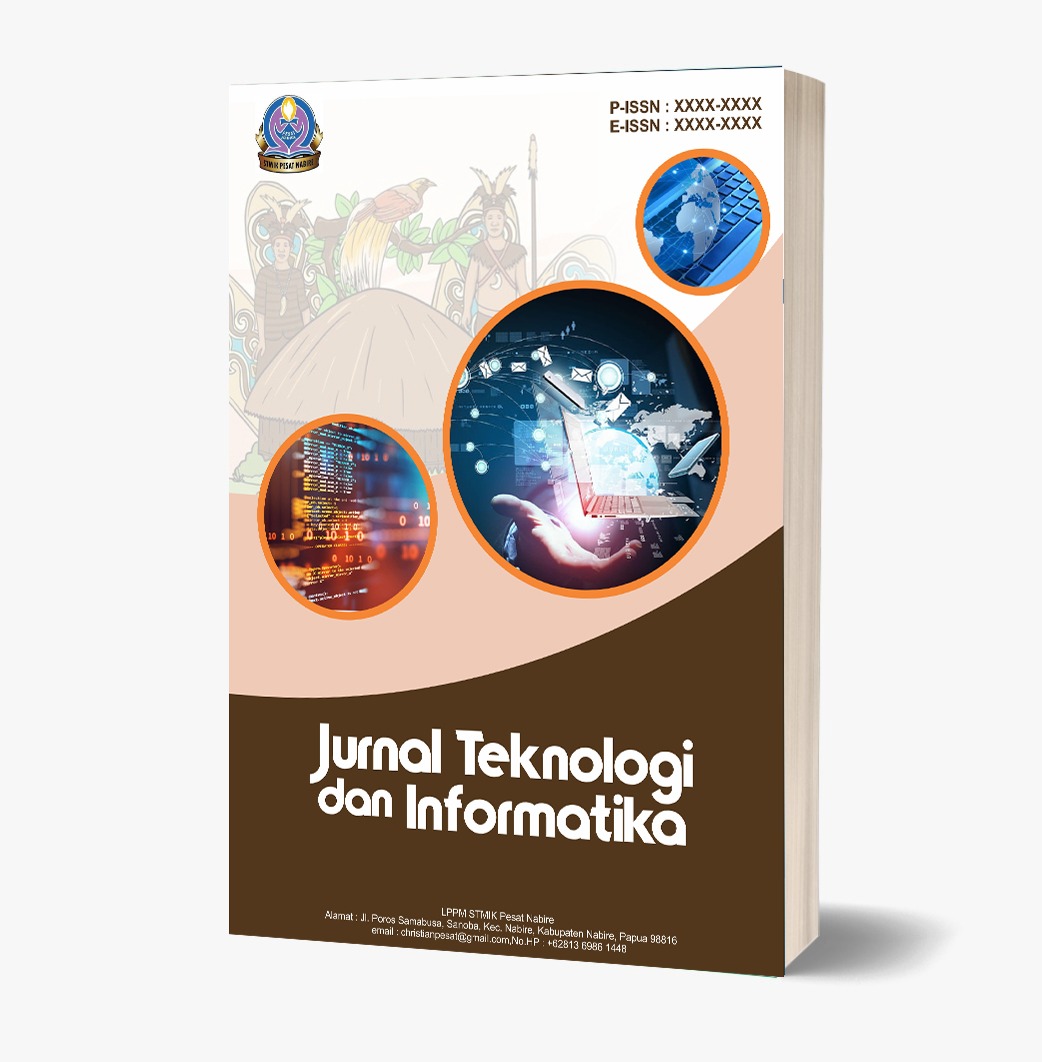Pemetaan Distribusi Aparatur Sipil Negara (ASN) Berdasarkan Status Kepegawaian Dalam Mendukung Pelayanan Publik Di Nabire, Papua Tengah
DOI:
https://doi.org/10.70539/jti.v3i1.61Keywords:
Central Papua, Civil Servants, Geographic Information System, Nabire, Public ServicesAbstract
This investigation endeavors to elucidate the spatial distribution of Civil Servants (ASN) in Nabire Regency, Central Papua, with a particular emphasis on their employment status and its implications for public service delivery. Underpinned by the pivotal role of ASN in governance and the provision of effective public services, this study seeks to address the challenges associated with the management of disparate spatial and non-spatial personnel data. Utilizing Geographic Information System (GIS) methodology, this research facilitates a nuanced analysis and visualization of ASN data, stratified by geographical location and employment status, including civil servants, government employees with work contracts, and contract workers. The findings underscore the significance of mapping ASN distribution in identifying regional disparities, particularly in remote and underdeveloped areas such as Nabire. Moreover, the efficacy of ArcMap software from the ArcGIS platform in generating precise ASN distribution maps is demonstrated, thereby informing evidence-based policy formulation. The study's implications highlight the necessity for a reassessment of ASN requirements to ensure the judicious and equitable appointment of government employees with work contracts and civil servants, ultimately enhancing public service provision.
References
U. Madjid, “Quality of Public Services: The Role of State Civil Apparatus in Realizing Good Governance,” Journal of ecohumanism, vol. 3, no. 7, 2024, doi: 10.62754/joe.v3i7.4590.
Ch. M. Lewerissa and E. Edyanto, “Contested local power in influencing regional development planning in Nabire Papua, Indonesia,” Otoritas: jurnal ilmu pemerintahan, vol. 14, no. 2, pp. 362–376, 2024, doi: 10.26618/ojip.v14i2.15334.
E. Dodsworth, “Geographic Information Systems,” Elsevier BV, 2024. doi: 10.1016/b978-0-323-95689-5.00126-7.
F. Ernst, S. Erdoğan, and Y. Bayram, “Human resource management using geographic information systems (gis): an example from turkish land registry directorates,” International Journal of Engineering, vol. 4, no. 2, pp. 71–77, 2019, doi: 10.26833/IJEG.450571.
B. Seeger and P. Widmayer, “Geographic Information Systems”, doi: 10.1201/9781420035179.ch55.
“Spatial Informatics Group (SIG)_asdf,” 2023, doi: 10.5281/zenodo.10171574.
A. Ahmed, K. Kheraj, A. Ali, K. S. S. Rani, and M. Meenaxy, “Geographical Distribution of Healthcare Facilities in Poonch District: An Evaluation through GIS,” Journal of mountain research, vol. 19, no. 1, 2024, doi: 10.51220/jmr.v19-i1.38.
P. Ogunmodede, “Geovisualization and geovisual analytics for smart city planning and design,” 2023, doi: 10.14293/pr2199.000545.v1.
R. Sebahi, “Analysis of the characteristics of the spatial distribution of secondary education schools in the city of Dujail using GIS,” Journal of STEPS for humanities and social sciences, vol. 1, no. 3, 2022, doi: 10.55384/2790-4237.1095.
N. Nirwana, A. Vatresia, and F. Utama, “Mapping Teacher Distribution Analysis with Digitation Technology Implementation to Improve Education Management in Bengkulu City,” pp. 197–202, 2019, doi: 10.2991/ICETEP-18.2019.49.
M. Habibi, “Ketimpangan Pembangunan Daerah di Era Otonomi Daerah,” Multiverse, vol. 3, no. 1, pp. 59–63, 2024, doi: 10.57251/multiverse.v3i1.1412.
S. Heri, D. Diyono, and S. Deva, “Geospatial Information Utilization in Indonesian Local Government,” 2018, doi: 10.1109/ICSTC.2018.8528707.
B. Gunawan, B. M. Ratmono, D. Kurniasih, and P. I. Setyoko, “Human Resources and Technology Integration in Effective Public Management,” 2023, doi: 10.30589/pgr.v7i3.782.
R. U. Attah, B. M. P. Garba, I. Gil-Ozoudeh, and O. Iwuanyanwu, “Leveraging geographic information systems and data analytics for enhanced public sector decision-making and urban planning,” Magna Scientia Advanced Research and Reviews, vol. 12, no. 2, pp. 152–163, 2024, doi: 10.30574/msarr.2024.12.2.0191.
A. S. Madaki, K. Ahmad, and D. Singh, “Information technology integration implementation in public sector organizations: Exploring challenges, opportunities, and future trends,” Information Development, 2024, doi: 10.1177/02666669241255661.














